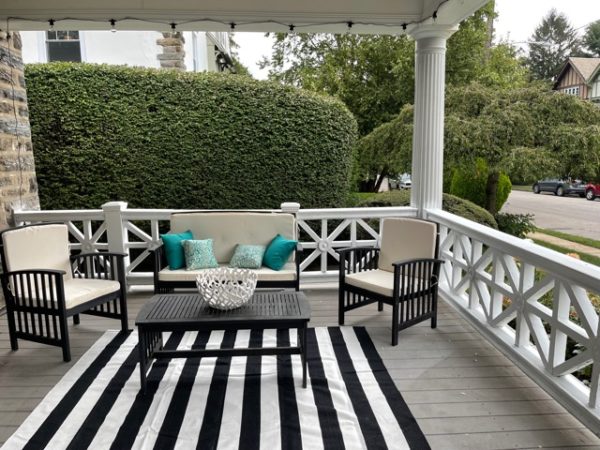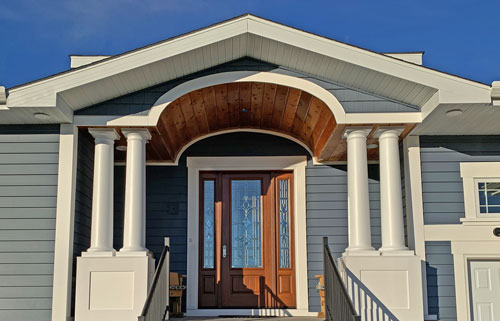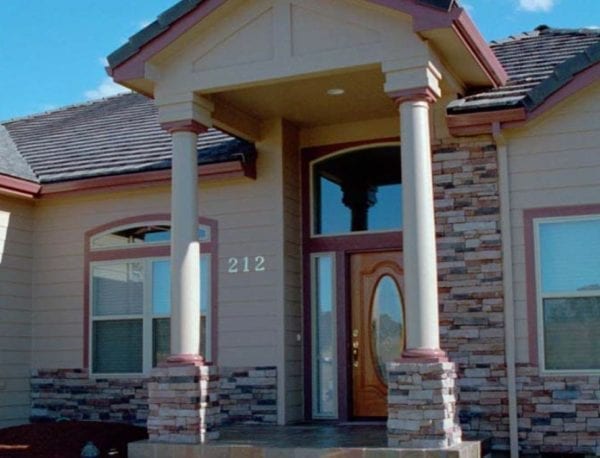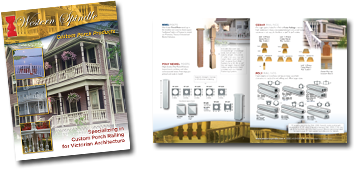What is the Best Material for Porch Columns?
Choosing the right column for your porch can be an overwhelming decision. Our customers need columns that can provide strength, durability, ease of installation, as well as the correct classic architectural design.
Columns date back over 3,000 years and material options for columns have changed dramatically in that time. The most common materials for columns include: wood, aluminum, concrete, FRP, synthetic stone and PVC. While each material may has its own appeal, we have found one that is better than the rest!
Fiberglass Polymer is the Best Material for Porch Columns
When most people say fiberglass columns, they are usually referring to Fiber-reinforced Polymer, or FRP. Around here, we typically just call them Fiberglass Polymer columns. This is a synthetic (man-made) material made of fiberglass, synthetic polymers, and marble dust. This gives each column a stone-like feel. It is one of the most cutting-edge materials in the construction industry. Our FRP columns have an extremely high load-bearing capacity and makes them the strongest option for your project. These columns are known for their ease of installation and low maintenance. They are architecturally appropriate for the projects that require them.
Many other materials are susceptible to varying weather conditions, stains, limited design options, and constant upkeep. Fiberglass Polymer material offers an array of advantages making it the best column material choice for your home. For these reasons, FRP columns are the best selling column choice among our valued American Porch customers.
Advantages of Fiberglass Polymer Column Material
Low Maintenance:
While wood columns are prone to insect damage and decay, our fiberglass columns are completely resistant to rot and destruction from pesky insects and mold. Each column is completely waterproof and nonporous, allowing them to be used as channels for plumbing and wiring. The constant care and maintenance that other columns require is nearly nonexistent with our columns. FRP columns are a great investment for not only your home, but also your peace of mind.
Load Bearing:

If strength is what you need, look no further. Pound for pound, FRP is stronger than concrete, steel or aluminum. Depending upon what size you are interested in, our columns have concentric load bearing capacities ranging from 6,000 to 20,000 lbs. Their beauty and strength is not solely reserved for outdoor use. Many of our customers install FRP columns inside their homes as well.
Classic Architecture:
Most PVC, aluminum, and concrete columns don’t achieve a traditional look that adheres to classical architecture. We find that columns are often designed with a straight taper, however each of our FRP columns are designed with an architecturally correct entasis. A correct entasis provides an aesthetically pleasing look. Additional information and a great visual example describing entasis vs straight taper can be found here.
Our FRP columns offer many different design options such as smooth, standard fluted, and custom fluted shafts. Our patented production process creates our columns with a hollow center that allows them to be used for structural purposes. We also provide split columns that can be reassembled as a decorative wrap around an existing post. We offer many split options such as: split for reassembly, ¾” wall engaged, two half columns, and ¾” corner wall engaged. If split for reassembly seems intimidating, do not worry. We designed our split for reassembly kit which provides you with all the tools you need. We also have round and square non-tapered FRP columns available; just give us a call for a quote!
Our Customers Prefer FRP Columns
Don’t just take our word for it – listen to what material our customers are choosing for their projects. According to a discussion on Houzz, several consumers would not use aluminum because of the lack 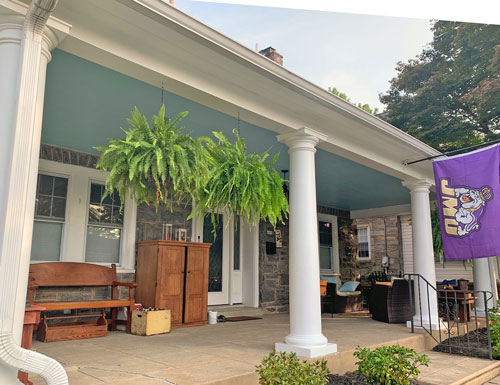 of an architecturally pleasing design. For example, with PVC which offers a low maintenance solution, but it lacks the look and feel of traditional columns and has the potential of yellowing over time.
of an architecturally pleasing design. For example, with PVC which offers a low maintenance solution, but it lacks the look and feel of traditional columns and has the potential of yellowing over time.
According to a Houzz discussion, many consumers recommended using fiberglass due to its low maintenance and structural capabilities as compared to PVC. While wood is still a very popular and beautiful choice for column projects (which is why we still offer it), we all know it is not a matter of if, but when rot will strike. Customers reach out to us because they are tired of the maintenance that wood requires. However, some are nervous that FRP will not allow them to achieve the same historic or traditional look. According to one of our valued customers, our FRP columns provided a traditional look for their project and created a painless installation process.
T.B. of Philadelphia, PA, writes: “Ordered 9 of American Porch’s 8” Tapered Tuscan columns and removed our rotted original porch columns from the late 1800s. Once new and painted it is almost impossible to tell the difference. Couldn’t be happier with the result! We had allocated two days to do the work but install was simpler than anticipated, and we were able to install all 9 in one day. 6 months later and they still look great!”
Fiberglass Polymer Columns Provide Peace of Mind
Our Fiberglass Polymer columns are the best material for porch columns. They offer countless advantages such as architectural beauty, strength, and rot resistance. They also provide you with something you may not realize – peace of mind. FRP columns give you the opportunity to sit on the porch with your favorite beverage, admire your work, and simply relax. You won’t have to worry about the performance, durability, or future of your columns.
You can enjoy the humidity (said no one ever) and breathe easy when your landscaper is making close cuts to the hedges directly next to your columns, and laugh at the one sprinkler placement that shows no mercy to the column placed on the corner of your porch.
FRP is the best material for your porch columns project. It provides the most advanced material of today without losing touch with the traditions and beautiful architecture of the past.
